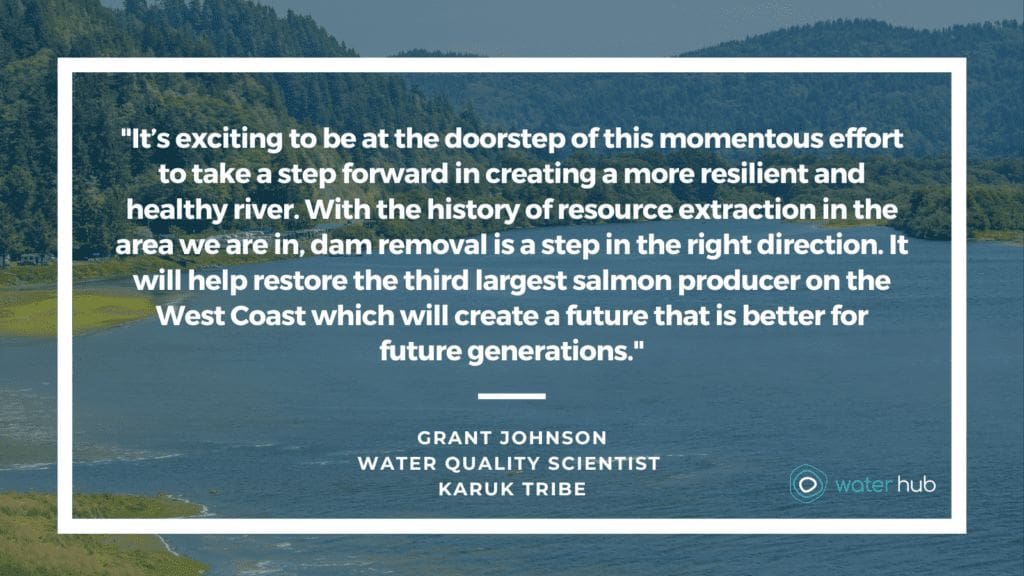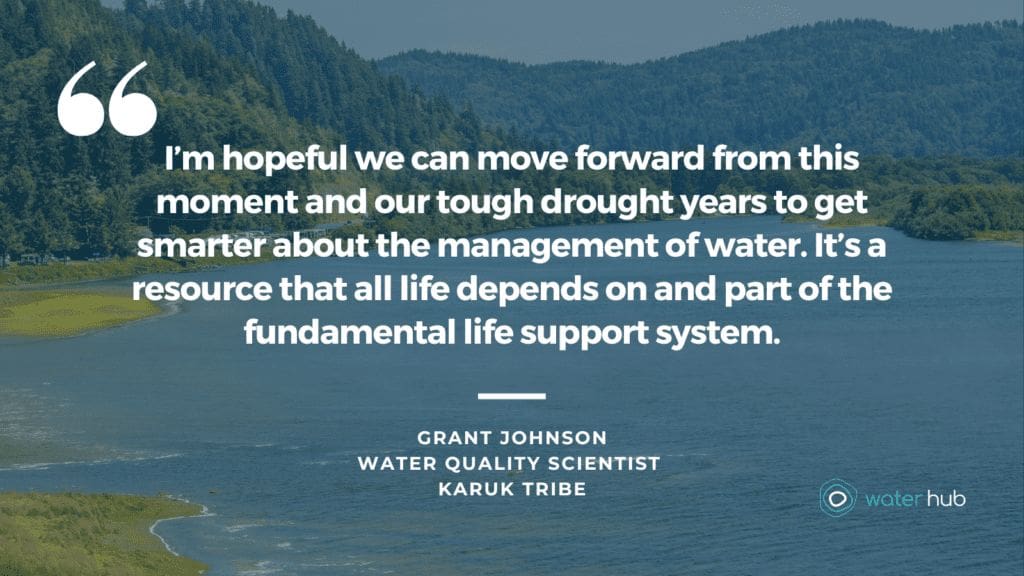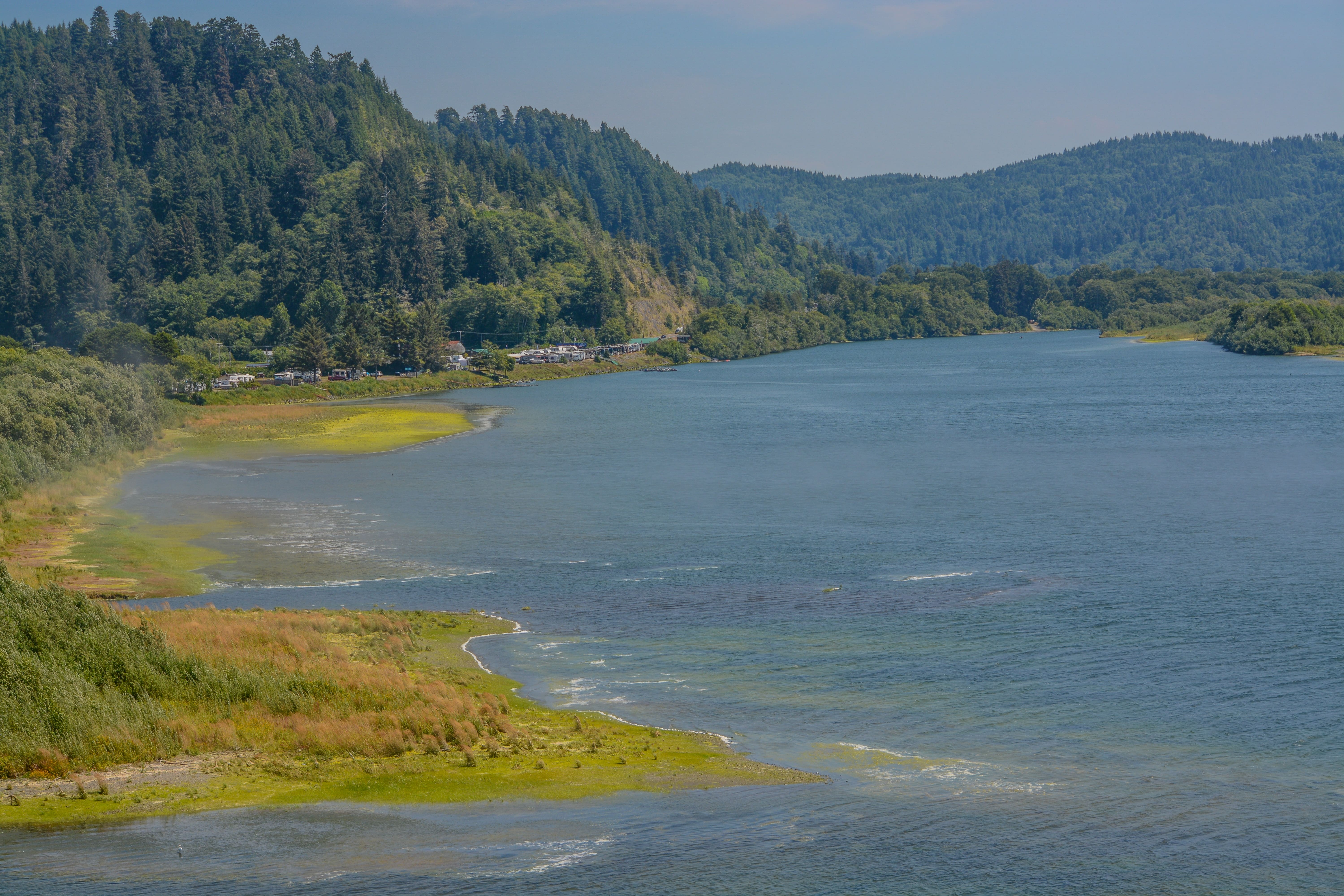In each edition of our regular Maven’s Notebook Q&A, we check in with advocates in California to talk about water issues impacting local communities. This month, we spoke to Grant Johnson about working with the Karuk tribe, the effort to remove dams along the Klamath River, restoring habitat, and reducing toxic algae.
Water Hub: Tell us about yourself and your role.
Grant Johnson (GJ): As a Scientist for the Karuk Tribe, I’ve worked in the water quality department for 15 years. Currently we are engaged in water monitoring associated with dam removal and compliance with the state and documenting blue-green algae issues that affect the Klamath River. The Karuk Tribe has played a major role in advocating for the establishment of guidelines for posting water bodies affected by harmful algal blooms with the state water board. The Karuk Tribe is a member of the California Cyanobacteria and Harmful Algal Bloom Network, and involved in collaborative efforts to keep folks across the state up to date on river conditions. The Tribe recently received treatment as a state status so they are able to interject into the 401 certification process of the Clean Water Act in regards to projects that would impact the Tribe’s water. Treatment as a state is important recognition so the Karuk’s can use their water quality standards to ensure that projects that require permitting from the federal government will comply with Tribal water quality standards.

What are the water issues that are top of mind for you and your community right now?
GJ: As you are well aware, dam removal is clearly the big news of the day and something that so many people have been working so hard to accomplish. That’s really at the forefront of our priorities right now to get that done. We’ve documented that the reservoirs are the source of microcystis, a known producer of the liver toxin microcystin, in the river. It accumulates in freshwater mussels and has the potential to bioaccumulate up the food chain, and alter the planktonic food web. It’s exciting to be at the doorstep of this momentous effort to take a step forward in creating a more resilient and healthy river. With the history of resource extraction in the area we are in, dam removal is a step in the right direction. It will help restore the third largest salmon producer on the West Coast which will create a future that is better for future generations.
How is the removal of dams connected to Harmful Algal Blooms (HABs)?
GJ: On the Klamath, the reservoirs created by the dams are basically bathtubs. You have warm, slow-moving water that creates the perfect environment to grow this cyanobacteria. At one point, we had documented the highest levels of microcystin [the toxin produced by the dominant blue green algae in the reservoirs] ever recorded in these reservoirs. That’s what happens when you dam up a natural, free-flowing river. Free-flowing rivers are not conducive to this toxic species.
What do you think media coverage often overlooks when reporting on both HABs and dam removal?
GJ: Something that isn’t mentioned is that HABs species have existed for a very long time. That’s not new. What is new is the actions we are taking that are exacerbating the problem. The silver lining is we can do things to manage and improve our water. You read the news with drought throughout the West and we’ve got to get smarter with the way that we use water and start valuing it more than we have in the past.
What do you wish decision makers understood better about the Klamath?
GJ: On the Klamath, working with the state of California, there has been a major shift in priorities. Recognizing the value of having functioning rivers and ecosystems is a dramatic and refreshing shift. I would encourage reporters and policymakers to come and see Mid Klamath to understand it because it’s a unique place. To meet with the Tribal council and Tribal leaders and see first hand all the hard work and effort that the Tribe is putting in to create a better place and a healthier river and ecosystem. These are very rural and very small towns. For people outside the area, it looks pristine, but when you talk to folks that have been here since time immemorial they have seen and documented the changes on the landscape. The science I do is playing catch up and building the case and showing the benefits of tradition management. The Tribal communities of the Klamath know the right way to manage the landscape.
Anything else you want to share about water?
GJ: Stay hopeful as we move forward. Society tends to be reactionary and need a crisis to act. I’m hopeful we can move forward from this moment and our tough drought years to get smarter about the management of water. It’s a resource that all life depends on and part of the fundamental life support system. We have to have water. We need to re-evaluate our priorities a little bit and focus on the things that are absolutely essential and protect and value them accordingly.
We’re fortunate to have some of the dams coming down in the Klamath. However, there are still water quality issues and there will still be HAB related issues in Klamath Lake since the dams up there are staying. This is a moment of possibility for folks to come together to figure out how to create a more resilient and sustainable future for the Klamath and for everyone that depends on it.

What’s your happy place?
GJ: Floating on the river with my kids!
Keep reading about HABs and sign up for the Water Hub’s newsletter for more stories from the heart of the water movement!
